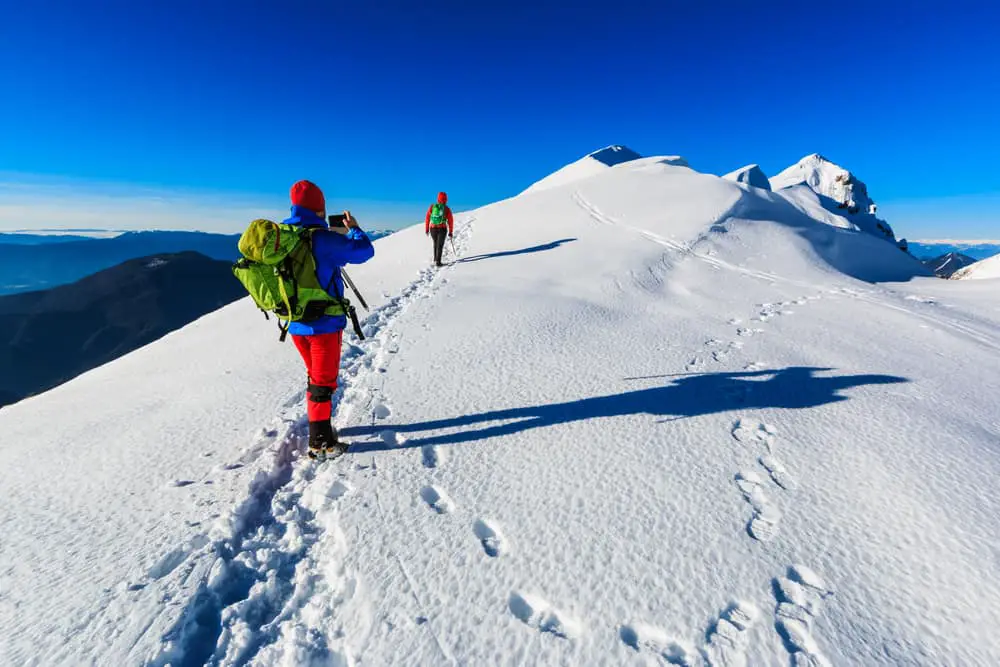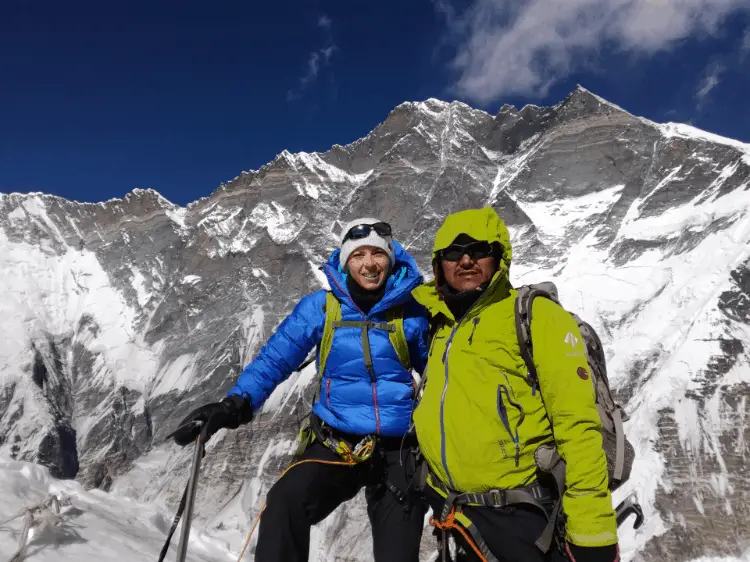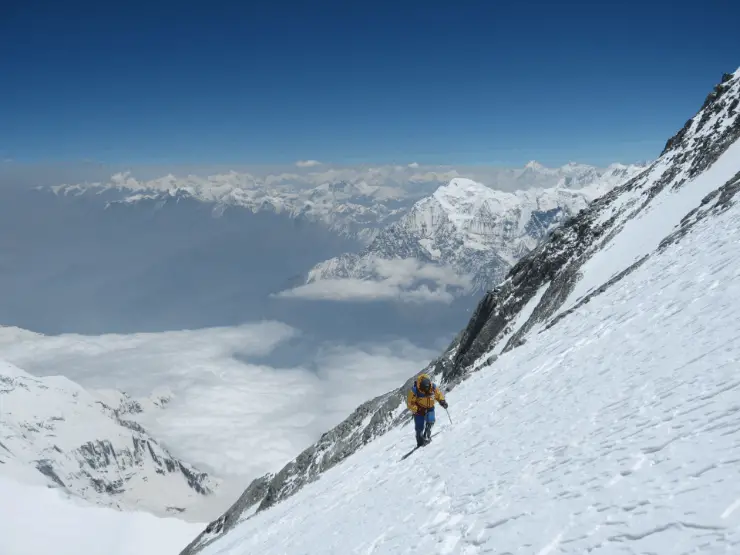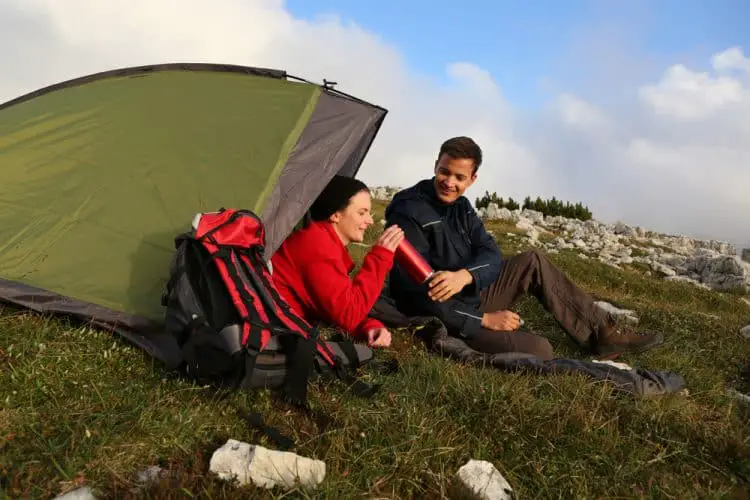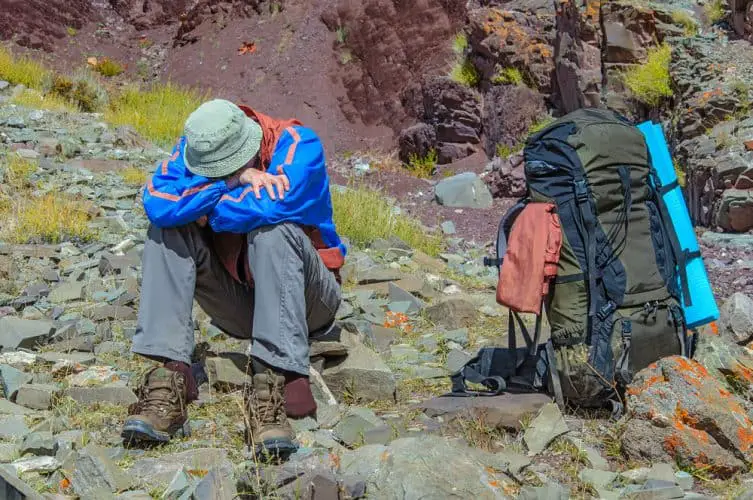At What Altitude Do You Need Oxygen When Hiking?
Since the beginning of time, people have been trekking all over the world in search of food and new land.
As times changed and the world evolved, hiking became a super popular leisure activity that people engage with for fun.
Since then, people have been pushing the limits as to what can be hiked and what the human body can accomplish.
Whether it be at the local park or Mount Everest, hiking is a fantastic way to engage with nature and stay in shape.
With more and more people engaging with the activity, technological advances also took place. The use of supplemental oxygen was a game changer.
So, you might ask, “at what altitude do you need oxygen when hiking?” Generally, supplemental oxygen is used when entering the Death Zone which is 26,000 feet, or 8000 meters, above sea level. However, altitude sickness can come into play far lower, so there are many aspects to consider.
Today, we will talk about altitude while hiking and many interesting and useful aspects of the topic.
So, let’s jump right into it!
At what altitude do you need oxygen when hiking?
As we already said, oxygen is really needed at 8000 meters, but this is not a cut and dry answer.
If you can do some serious hiking and not use oxygen until 8000 meters, you are in serious shape and have a ton of experience in the sport.
When thinking about hiking above 6000 meters or so, it is really turning into mountaineering. This is a more intense way to climb mountains, but for the sake of the conversation, hiking in this context is still being taken into consideration.
Depending on the physical condition of the person, oxygen can be used lower than 8000 meters.
However, using oxygen can be expensive, so that is why it is used in more intense situations higher up.
In fact, 6500 meters is another point in the climb where oxygen is used by many hikers. So, the exact numbers will be different based on who you ask, but the standards are all very similar.
The different oxygen levels at different altitudes
As you make your way up the elevation levels, the oxygen percentages that you take in will lower.
Meters | Effective Oxygen % |
|---|---|
0 | 20.9 |
600 | 19.4 |
1524 | 17.3 |
3353 | 13.7 |
6096 | 9.7 |
7925 | 7.8 |
All figures per higherpeak.com
How much it lowers is what you need to pay attention to in order to hike safely. Here is a small chart to show how oxygen levels vary depending on the altitude.
As you can see, the higher you go, the changes in oxygen can be quite dramatic. Once you get to Everest level which is 8839 meters, you are looking at less than 7% effective oxygen.
And that is as extreme as it gets.
How does oxygen help at high altitude?
The higher up, the thinner the natural oxygen levels are. So, when you are at a higher elevation, your blood is less oxygenated.
When your blood has less oxygens, specifically in the lungs, your body has to start making changes and shut certain aspects of your bodily functions down or almost down.
When you have supplemental oxygen, you are keeping your blood oxygen levels in balance, which helps you perform at the best level possible.
This helps prevent altitude sickness and other issues that will be talked about later in the article.
Factors that affect how long you can hike without oxygen
There are a few factors that will play into how long you can hike without adding additional oxygen.
Fitness Levels and experience
One of the biggest factors is how fit you are. Your fitness level will directly affect how much your body can take before shutting down from the lack of oxygen.
If you are an experienced hiker and are in great physical shape, you are in a decent position for success. Also, it comes down to your experience. If you have experience with high altitude hiking and climbing, you will be in a better starting position than someone who has never done it before.
A no-brainer, right?
Level of acclimatization
The biggest factor is how acclimatized you are to the specific area. When you are short on oxygen from being at altitude, your body attempts to catch up by breathing rapidly.
If you spend more time at slightly lower altitudes and working your way up, your body can adjust at a much healthier level.
The altitude you are used to
If you live in Colorado, you are already in a much better position than someone that lives in San Diego, for example.
So, if your body is already used to a certain altitude, you are one step ahead.
Genetics
Believe it or not, how you handle high altitude does weigh on your genetics. Some people will be more susceptible to altitude sickness just based on their genetic makeup.
Unfortunately, this is something that we cannot control nor change, so it is what it is.
What Is altitude sickness?
Altitude sickness is an illness that comes when your body is struggling to adjust to a lower level of oxygen and lower air pressure.
This is also called the mountain sickness by some, as this is where a majority of cases will be. Watch the interesting video below:
Unfortunately, no one can totally avoid altitude sickness. People can be more prone to suffering from it, but no one is completely immune.
In fact, a majority of people will get altitude sickness at some point as they go higher. According to the Cleveland Clinic, 75% of people who are above 10,000 feet, or about 3000 meters, will experience mild altitude sickness symptoms.
Mild symptoms include headache and fatigue, but they may be so subtle that you hardly even notice it.
Once you keep climbing up the elevation scale, the symptoms can turn to moderate and eventually severe. Moderate symptoms will bring headaches, nausea, and coordination issues.
After that, you will have severe fatigue and trouble both breathing and walking. At this point, medical attention and getting to a lower altitude are both crucial. This is what severe altitude sickness will do to you.
The biggest thing to keep in mind is that you don’t have to be hiking or climbing a mountain to be affected.
If you are used to living at a low altitude and you simply visit a location with a considerably higher elevation, you will probably experience mild symptoms.
It is that simple. When these aspects are coupled with energy excursion, the symptoms will be more dramatic.
What is considered high altitude hiking?
Hiking can be considered high altitude once you hit 8000 feet, or 2400 meters, and above. Although altitude sickness can absolutely come in at lower levels, the industry considers high altitude hiking to be at that number and above.
The top of that range is technically as high as you can go, but there are further designations for 3600 meters and above.
This is the 12,000 feet mark and is designated as a more intense high-altitude endeavor. There is no official title or anything, but if someone says that they went on a very high-altitude hike, it should be at that extreme mark.
How to acclimatize better to avoid altitude sickness
Although no one is totally immune to altitude sickness, as we have already talked about, there are some ways that you can better acclimate yourself to the high altitude.
Drink lots of water
The first and best thing you can do to avoid altitude sickness is to stay hydrated. When you climb the elevation ladder, your body will be using more salt and water, so you need to replenish it as much as possible.
Many altitude sickness symptoms will be similar to ones of dehydration, so you can treat it as such, at least when the symptoms are mild.
Sleep often
Getting a proper amount of sleep is so crucial for your body to properly adjust. One of the biggest tips for acclimating properly is to hike high and sleep low.
If you can control it, do your hiking in elevation and let your body recover in lower areas. Obviously, this is not plausible for everyone, but if you can do it, do it.
If you do not have that strategy available, be sure to sleep well and often. Getting enough sleep is a problem for everyday life, but it is more important to get in the wilderness. This will help your body expedite the recovery process.
Wear protective clothes
One aspect of the wild that can really take it out of you is the sun. Especially where the air is thinner, the sun’s rays are much stronger and will drain you faster.
Wearing sun protective clothing will allow for your body to not be as affected by the sun. This includes sunscreen, large hats, and clothes that will cover the body.
Eat more potassium
One of the weirder tips is to eat more potassium. Increasing your potassium levels will help you avoid cramping and other dehydration-related symptoms.
You can accomplish this by eating foods like avocados and bananas to help supplement lower potassium levels. In addition, here’s an example nutrition plan that’s quite efficient for beginners.
Take it easy on your body
When in altitude, waking up early and hitting the gym super hard is not a good idea until you are fully acclimated to the area.
When you drain your body, you are not letting it fully recover and acclimate. This is a big reason why high-altitude hikers suffer from this sickness. They tend to push too hard too fast and it catches up with them.
So, if you are going to an area where acclimatization is necessary, take it easy at the beginning and give your body enough time to get used to those oxygen levels.
How to treat altitude sickness
If you feel the effects of altitude sickness hitting you in real time, there are a few things to do to treat it.
The very first thing you should do is stop everything. Quit hiking and definitely quit going higher. If it is super mild, take a break, drink some water, then later assess the situation.
If your symptoms are hitting pretty hard, you need to call it a day. This means resting in place then going back down to a lower altitude when you are able.
You can also start taking Motrin or ibuprofen to combat headaches and other issues.
Once you are back at a comfortable altitude, the key is to stay away from heavy work and not gain more elevation for a day or two. This will give your body that proper amount of time to fully recover.
There is also anti-sickness medication that you can get over the counter, but those are not full treatments. They will just help with the process of getting back on your feet.
Closing Thoughts
As you can see, altitude sickness is no joke. When your body does not have the ability to acclimate properly, the effects of the illness will start to set in.
Hopefully, you now have a better picture as to what altitude sickness is and what you can do to combat the effects it has on you.
If you are a hiker that will dabble with high altitude explorations, keep in mind that 8000 meters is the death zone and supplemental oxygen is commonly used much lower than that.
Also, keep in mind that oxygen is used to combat altitude sickness, but you also have to do your best to acclimate correctly before you get to the point where oxygen will be taken out.
So, if you ask yourself “at what altitude do you need oxygen when hiking,” there is no set answer, but reference the information above to get a really good idea of that answer.
Good luck, and happy hiking!
Asen Stoyanchev
Founder of this website, Asen is a passionate hiker and writer who is also a gear nerd. He’s been featured on many established hiking websites where he gives hiking advice & tips. When he is not trekking with his family or friends, he is writing articles and product reviews. Asen spends most of his time in Bulgaria but he constantly travels the world in seek of more unforgettable experiences. Read more about Asen here.

